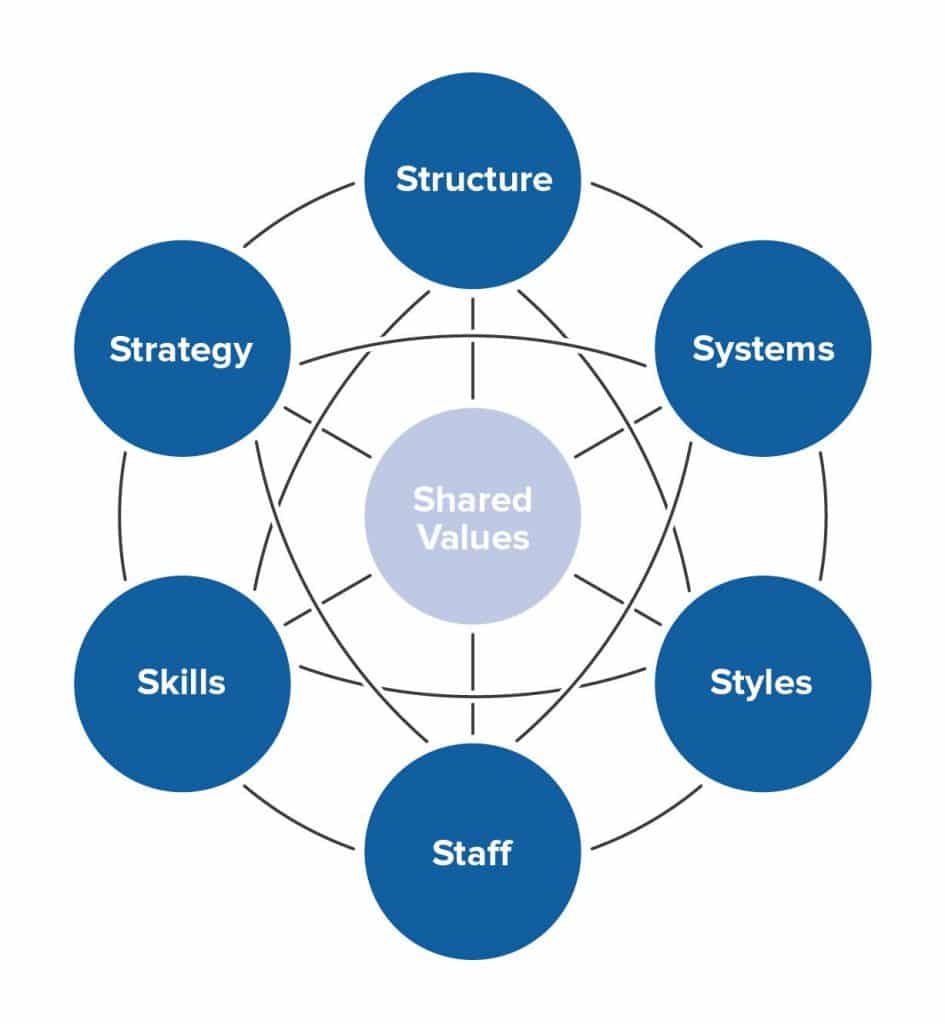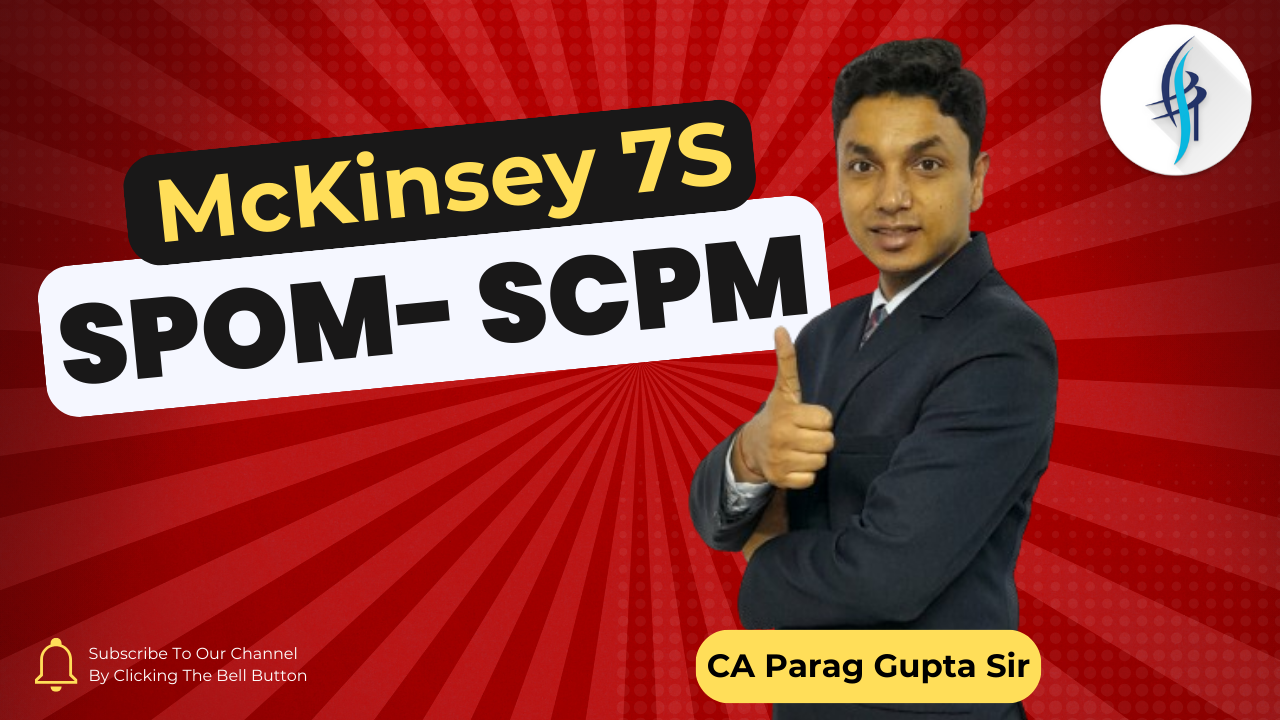In the ever-evolving landscape of business management, understanding and optimizing organizational performance is crucial. One of the most effective tools for this purpose is the McKinsey 7S Framework, a model that has stood the test of time in helping organizations achieve strategic alignment and operational excellence. In this blog, we will explore the McKinsey 7S Framework, guided by the expertise of Parag Gupta Sir, a renowned faculty for SPOM- Strategic Cost & Performance management (SCPM).
What is the McKinsey 7S Framework?

The McKinsey 7S Framework is a management model developed by consultants at McKinsey & Company in the 1980s. It is designed to assess and align seven critical elements within an organization to ensure they work harmoniously towards achieving strategic goals. These seven elements are:
- Strategy: The plan devised to maintain and build competitive advantage over the competition.
- Structure: The way the organization is structured and who reports to whom.
- Systems: The daily activities and procedures that staff use to get the job done.
- Shared Values: The core values of the company that are evidenced in the corporate culture and the general work ethic.
- Style: The style of leadership adopted.
- Staff: The employees and their general capabilities.
- Skills: The actual skills and competencies of the employees working for the company.
Check out Parag sir’s video on Mckinsey 7S:

The 7S Model: An Integrated Approach
Parag Gupta Sir emphasizes that the power of the 7S Framework lies in its holistic approach. Unlike other models that focus on individual components in isolation, the 7S Framework interlinks all seven elements, ensuring that any change in one area is harmonized with the others. This interconnectedness is vital for achieving strategic coherence and operational efficiency.
1. Strategy
Strategy is the cornerstone of the 7S Framework. It involves setting long-term goals and determining the best course of action to achieve them. Parag Gupta Sir highlights that a well-defined strategy provides direction and sets the stage for aligning the other six elements.
2. Structure
The structure of an organization refers to its hierarchical setup. It defines roles, responsibilities, and the flow of information. An optimal structure supports efficient decision-making and enhances communication across various levels of the organization.
3. Systems
Systems encompass the daily processes and procedures that govern organizational activities. Effective systems streamline operations, reduce redundancies, and ensure that tasks are performed consistently and efficiently.
4. Shared Values
At the heart of the 7S Framework are the shared values. These are the fundamental beliefs and guiding principles that shape the organization’s culture. Shared values influence employee behavior, organizational ethos, and the overall work environment.
5. Style
Style refers to the leadership approach adopted by management. Leadership style affects organizational morale, employee engagement, and the overall effectiveness of management. Parag Gupta Sir emphasizes that adaptive leadership styles that resonate with the organization’s values and culture are crucial for success.
6. Staff
The staff element focuses on the organization’s human resources. It involves recruiting, training, and developing employees to ensure they possess the necessary skills and competencies. A talented and motivated workforce is key to executing the organization’s strategy effectively.
7. Skills
Skills refer to the specific capabilities and expertise of the organization’s employees. Identifying and nurturing these skills ensures that the organization can meet its strategic objectives and adapt to changing market demands.
Applying the McKinsey 7S Framework
Parag Gupta Sir provides practical insights into applying the McKinsey 7S Framework in real-world scenarios. Here’s a step-by-step approach:
- Assess the Current State: Conduct a comprehensive analysis of each of the seven elements within your organization. Identify strengths, weaknesses, and areas for improvement.
- Identify Gaps and Misalignments: Determine where misalignments exist between the elements. For example, if your strategy emphasizes innovation but your structure stifles creativity, adjustments are needed.
- Develop an Action Plan: Create a detailed plan to address the identified gaps. This plan should outline specific actions, responsible parties, and timelines for implementation.
- Implement Changes: Execute the action plan, ensuring that changes in one area are integrated with the other elements. For instance, introducing a new system should align with your strategic objectives and be supported by the necessary skills and staff.
- Monitor and Adjust: Continuously monitor the impact of changes and make necessary adjustments. The 7S Framework is not a one-time exercise but an ongoing process of alignment and improvement.
Real-World Examples
Parag Gupta Sir enriches his teachings with real-world examples that illustrate the practical application of the 7S Framework. For instance, he discusses how a leading tech company restructured its organization to foster innovation, aligning its strategy, structure, and systems to support a culture of creativity and rapid development.
Conclusion
The McKinsey 7S Framework is a timeless tool that provides a comprehensive approach to organizational analysis and improvement. By understanding and aligning the seven elements—Strategy, Structure, Systems, Shared Values, Style, Staff, and Skills—organizations can achieve greater coherence, efficiency, and success.
Under the guidance of Parag Gupta Sir, mastering the 7S Framework becomes an invaluable asset for students, professionals, and business leaders alike. His expert insights and practical applications make this complex model accessible and actionable, empowering organizations to navigate the challenges of today’s dynamic business environment.
For more in-depth learning, insights, and practical strategies, stay tuned to Parag Gupta Sir’s sessions on Strategic Planning and Operations Management.
Want to enroll to SPOM-SCPM classes?






You must be logged in to post a comment.